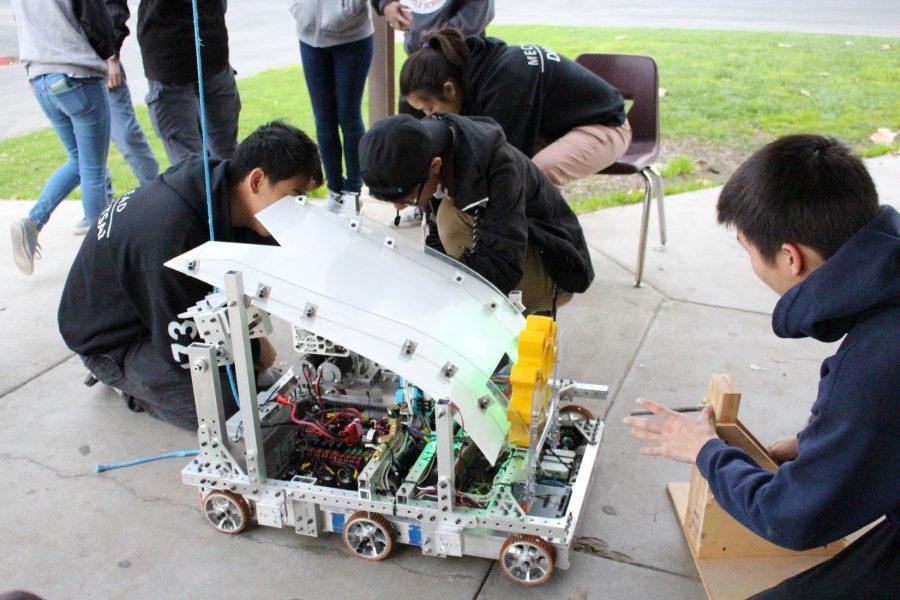Team Sprocket rockets to success
DBHS FRC Robotics team makes team history at the San Diego regional competition.
From left to right, junior Nathan Tsai and seniors Casey Chen and Brian Song work on their robot at their San Diego Regional Competition.
March 22, 2017
In one of its most successful tournaments in recent history, Diamond Bar High School’s 3473: Team Sprocket placed ninth out of 66 competing teams at the FIRST Robotics Regionals competition at San Diego, which took place early March.
In addition, Team Sprocket ranked second for Calculated Cumulative Win Margin, fifth for Offensive Power Rating and ninth for Defensive Power Rating—all record ranks in the team’s history.
“Being on the drive team as drive coach, the guy making the tactical decisions, I was able to have a front row seat of my team’s accomplishments, feeling all of the hype and emotion as I directed the other drive team members,” senior team captain Casey Chen said via Facebook.
Each team had to build a robot that could perform multiple tasks on a field, including putting gears on a peg and climbing a rope.
The event was held March 9-11 and was split into a qualification round and elimination round.
The qualification round consisted of 88 randomly assigned matches to determine the rankings of each team, the top eight of which moved on to the elimination round.
Each of the top eight selected two other teams to join them to form an alliance. Team Sprocket ended up losing in the quarterfinals to the overall winners of the tournament.
“Though we had been eliminated I was incredibly proud of everything we had accomplished,” Chen said. “I could not have hoped for more.”
The team was given six weeks for planning and construction, a period known as the “build season.”
This year, the team more heavily utilized the resources at school such as woodshop and 3D-printers, a move that impacted decisions on manufacturing and preparation.
One such decision, according to Chen, was the team’s heavy reliance on computer aided design, which team members could work on at home.
The team needed to plan ahead as to what parts of the robot they could use even before build season started by making all parts modular, flexible, simple and interchangeable.
“Another challenge that we faced was one of reputation, in our team, our school, and robotics community,” Chen said. “The performance and image of the team during my first two years on it could be described as ‘eh’ and ‘lackluster’ … and I am proud to say that in these past two years we have improved in leaps and bounds.”




